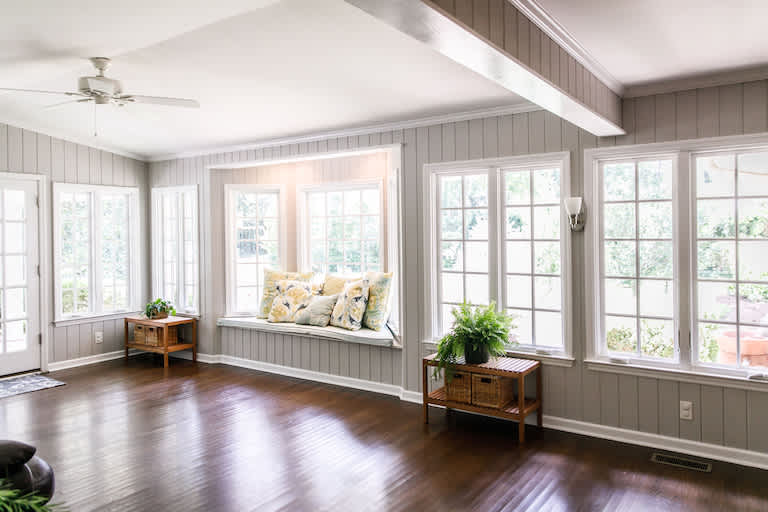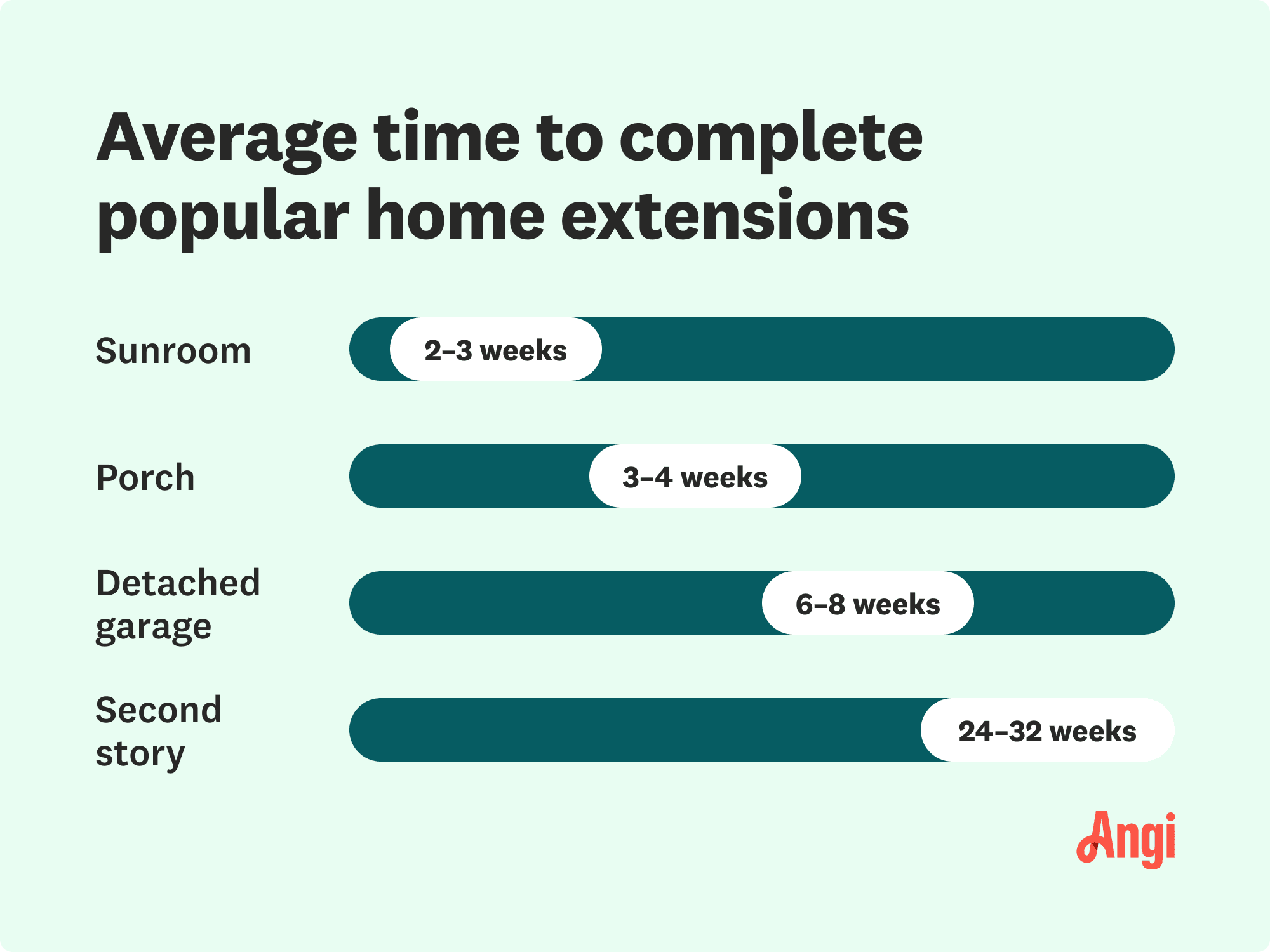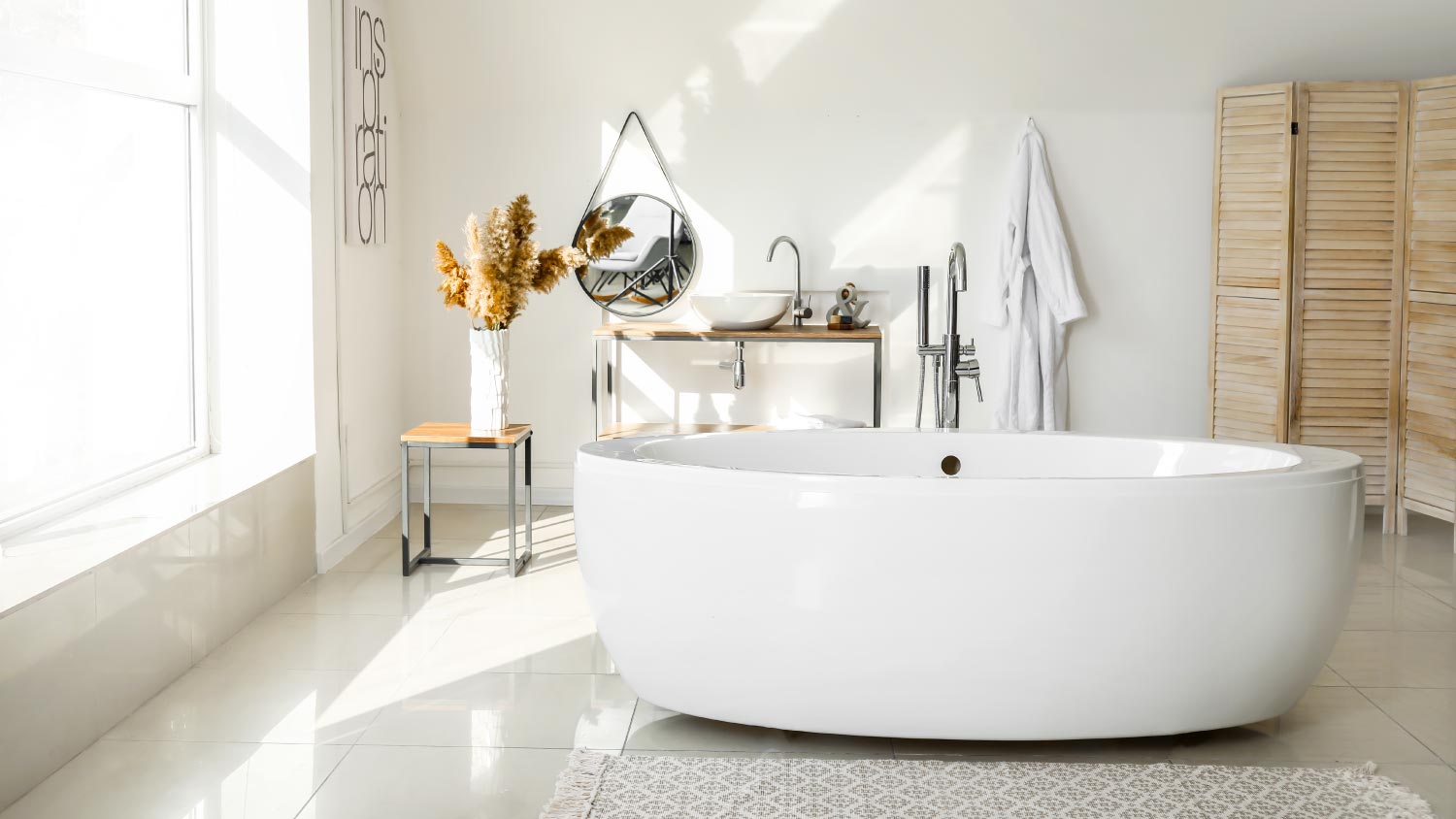
Knowing how much it costs to renovate a house will help you plan and budget appropriately. Use this guide to get a rough estimate for your project.
A home addition costs an average of $54,719 in Baltimore, Maryland. Depending on the location, size, type, and materials, most homeowners spend between $26,868 and $83,043.


Adding extra square footage to your Baltimore home with a home addition can increase your home’s value and give you valuable additional living space.
Adding a primary suite, additional bathroom, or expanded kitchen in Baltimore can offer an ROI of 20% to 50%.
Hire a qualified Baltimore homebuilder to keep your project on schedule, within budget, and compliant with all local codes.
Home addition permits in Baltimore cost at least $75, increasing by $10 for every 1,000 cubic feet of gross volume.
If your Baltimore home is feeling short on space, building a home addition may be the answer. Building an addition in Baltimore averages from $26,868 to $83,043, with the average homeowner paying around $54,719. Your total project cost will depend on factors like the size of the addition, how you’ll use the new space, and what materials you choose. Take a look at some of the things that determine how much you’ll pay for a home addition.
Once you’ve narrowed down your home addition ideas and know what kind of addition you want to build, you’ll need to look at various factors to determine how much to budget. The addition size and type, which materials you choose, what kind of prep the site needs, and how much labor costs will all affect your total project cost.
Home additions cost between $80 and $200 per square foot if you’re building out and between $300 and $500 per square foot if you’re building up. The cost to add a 10x10 room to a house costs an average of $12,500 if you build out and $40,000 if you build up.
Remember that if you add square footage to your home, the cost of your homeowners insurance will increase accordingly. Before you embark on this project, speak to your insurance company about expected costs.
Where in those ranges your total falls also depends on the complexity of the room and its finishes. For example, adding a bathroom will often cost more than a bedroom since it requires additional plumbing and electrical work. Project costs will depend on whether you’re building out with a bump-out or up with a second story.
| Addition Size (Sq. Ft.) | Bump-Out Build | Second Story Build |
|---|---|---|
| 60 | $5,125–$12,850 | $19,250–$32,100 |
| 80 | $6,850–$17,125 | $25,700–$42,800 |
| 100 | $8,550–$21,400 | $32,100–$53,500 |
| 150 | $12,825–$32,100 | $48,150–$80,250 |
| 200 | $17,100–$42,800 | $64,200–$107,000 |
| 300 | $25,650–$64,200 | $96,300–$160,500 |
| 400 | $34,200–$85,600 | $128,400–$214,000 |
As you can imagine, it takes many kinds of building materials to complete a custom home addition. Material prices vary widely, so your price could push closer to $83,043 if you choose luxury or high-end materials at each step of the way.
Framing Materials Cost:
| Framing Material | Average Cost per Sq. Ft. | Pros | Cons |
|---|---|---|---|
| Wood | $1–$5 | Cost-effective, easy to install | Fire risk, prone to pests and moisture problems |
| Steel | $2–$4 | Durable, fire-resistant | Complex installation, limits roof design |
Insulation Materials Cost:
| Insulation Material | Average Cost per Sq. Ft. | Pros | Cons |
|---|---|---|---|
| Blown-in | $0.50–$2.30 | Low-cost, fast installation | Prone to water damage, less durable |
| Fiberglass | $0.30–$1.50 | Fire-resistant, cost-effective | Lower R-value, easily damaged |
| Spray foam | $1.50–$4.90 | High R-value, resists pests and moisture | Higher cost, more flammable |
| Rockwool | $1.10–$3.10 | Durable, high R-value | Loose fibers can be a health risk, higher cost |
Roofing Materials Cost:
| Roofing Material | Average Cost per Sq. Ft. | Pros | Cons |
|---|---|---|---|
| Asphalt shingles | $1–$1.20 | Affordable, easy to install | Prone to granule loss, shorter lifespan |
| Metal | $5–$16 | Long lifespan, low-maintenance | Higher cost, difficult to repair |
| Slate | $10–$30 | Longest lifespan, high-end aesthetics | Very heavy, difficult to install/repair |
| Synthetic | $5–$12 | Durable, lightweight | Variable quality, may look engineered |
Flooring Materials Cost:
| Flooring Material | Average Cost per Sq. Ft. | Pros | Cons |
|---|---|---|---|
| Hardwood | $6–$12 | Long-lasting, many available options | Higher cost, prone to dents and scratches |
| Laminate | $1.30–$6 | Budget-friendly, easy to install | Difficult to repair, prone to water damage |
| Tile | $5–$40 | Variety of options, easy to clean | More expensive, complex installation |
| Carpet | $3.50–$11 | Retains warmth, soft to walk on | Difficult to keep clean absorbs odors |
Siding Materials Cost
| Siding Material | Average Cost per Sq. Ft. | Pros | Cons |
|---|---|---|---|
| Vinyl | $3–$12 | Budget-friendly, easy to install | Shorter lifespan, prone to impact damage |
| Fiber cement | $5–$14 | Extremely durable, long lifespan | Higher cost, difficult to repair |
| Wood | $2–$6 | Eco-friendly, wide range of styles | Prone to rot and pest damage, high-maintenance |

The cost to add on a room varies based on the type and size of the room you’re building. Rooms like kitchens and bathrooms require plumbing work that a bedroom doesn’t, while an unfinished attic home addition may not require electrical or HVAC work that a bedroom needs. The cost per square foot for your home addition will vary based on utilities and the finishes required for how you plan on using the extra square footage.
| Addition Type | Average Cost Range |
|---|---|
| Attic | $42,800–$49,200 |
| Bathroom | $37,450–$43,075 |
| Bedroom | $66,875–$76,900 |
| Dining room | $32,100–$36,900 |
| Kitchen | $58,850–$67,700 |
| Laundry room | $8,550–$9,850 |
| Living room | $32,100–$36,900 |
| Mudroom | $12,850–$14,775 |
| Sunroom | $50,300–$57,775 |
| Detached garage | $28,250–$32,500 |
| In-law suite | $88,550–$101,900 |
| Second story | $187,250–$215,075 |
On average, site prep for a home addition costs between $1,500 and $5,000. You may not need any site prep in some cases, while other home addition projects may require grading land, demolishing concrete patios, removing trees, and other work that can add to your total.
In order to ensure your home addition is up to code, you’ll need to obtain a permit from the Baltimore City Department of Housing and Community Development. In Baltimore, permits for an addition start at $75 and increase by $10 for every 1,000 cubic feet of gross volume. Unpermitted work can result in fines, citations, or having to remove the completed work, so ensure you have all necessary permits and have paid the permit fees before beginning work.
Overall, labor costs will make up about 40% to 60% of your total project cost when building an addition. Hiring a general contractor or homebuilder in Baltimore, Maryland, will run about 10% to 20% of the project cost. A qualified building pro will ensure your build is up to code, keep your project on schedule, answer your home addition questions, and coordinate subcontractors.
Because building an addition follows many of the same steps as building a house, you’ll need to hire various pros to complete certain jobs. An electrician, plumber, and HVAC tech will need to run utilities to the addition, a structural engineer will need to confirm your plans are structurally sound, and a roofer will make sure your addition is properly covered. Here are a few of the pros you may need to hire when building an addition:
Interior painter cost: $2–$6 per sq. ft.
Roofer cost: $4–$11 per sq. ft.
Electrician cost: $50–$100 per hour
HVAC technician cost: $100–$250 per hour
Plumber cost: $45–$200 per hour
Carpenter cost: $75–$125 per hour
Structural engineer cost: $200–$1,500
Landscaper cost: $1,200–$6,200
Home additions can add value to your home, providing a return on investment (ROI) of 20% to 50%. Some additions, like a primary suite, additional bathroom, or expanded kitchen, offer a higher ROI since they’re features that prospective buyers value.
Baltimore’s average home size is around 1,600 square feet compared to the national average of around 2,200 square feet. Adding square footage to your home can not only make it more comfortable for you but also help set your property apart when it’s time to sell.
Home is the most important place on earth, which is why Angi has helped more than 150 million homeowners transform their houses into homes they adore. To help homeowners with their next project, Angi provides readers with the most accurate cost data and upholds strict editorial standards. We survey real Angi customers about their project costs to develop the pricing data you see, so you can make the best decisions for you and your home. We pair this data with research from reputable sources, including the U.S. Bureau of Labor Statistics, academic journals, market studies, and interviews with industry experts—all to ensure our prices reflect real-world projects.
Want to help us improve our cost data? Send us a recent project quote to [email protected]. Quotes and personal information will not be shared publicly.
From average costs to expert advice, get all the answers you need to get your job done.

Knowing how much it costs to renovate a house will help you plan and budget appropriately. Use this guide to get a rough estimate for your project.

Remodeling your bathroom can add significant value to your home. Your bathroom remodel cost in Columbus, OH will depend on size, fixtures, materials, labor, and other factors.

If your bathroom needs sprucing up, a new vanity will make a big difference. Vanity installation costs depend on the size and type of the countertops and fixtures you choose.

There are eight common shower pan sizes, which vary based on the shape of the shower. If you want a shower in a unique size, you can custom order a shower pan.

An updated bathtub can give a bathroom a whole new look. Find out how much it costs to replace a bathtub in Columbus, OH, including prices by type and labor costs.

This prep and staging area has numerous uses in the versatile modern home. Here’s what a butler’s pantry does and how you can add one to your home.